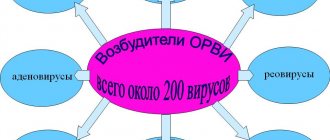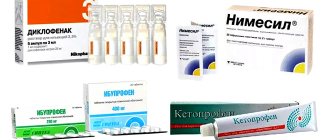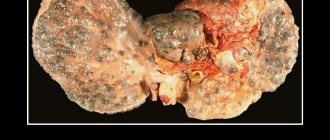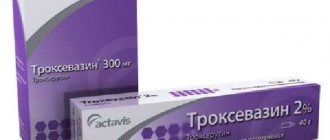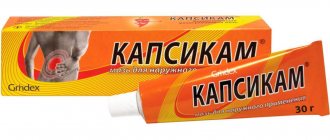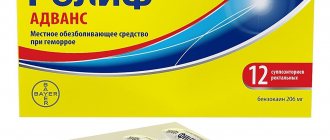Various acute respiratory viral infections (ARVI) and influenza occupy a leading position among all infectious diseases. They make up about 95%. The thing is that they are transmitted by airborne droplets and contact. That is, if a group of people is in close contact (kindergarten, school, office, dormitory, etc.), one sick person will infect the majority.
Photo: Pixabay.com
All ARVI and influenza have common symptoms:
- Nasal congestion, runny nose.
- A sore throat.
- Sneezing, coughing.
- Chills, general malaise, headache, muscle pain.
- Temperature increase.
Despite the general symptoms of the disease, viral infections are all different. Conventionally, they are combined into several groups:
- Adenoviral infection.
This virus affects the mucous membranes of the upper respiratory tract, conjunctiva, and can affect the mucous membranes of the gastrointestinal tract. - Flu.
The influenza virus causes acute respiratory illness. If treatment is delayed, it often causes complications, in particular pneumonia. - Parainfluenza.
This virus affects the upper respiratory tract, especially the larynx. Compared to regular flu, it is much milder and without complications. - Rhinovirus infection.
Rhinoviruses infect the nasal mucosa. They quickly die in the external environment and when heated, so the form of the disease is usually quite mild. - Respiratory syncytial infection.
This type of virus primarily affects the lower respiratory tract. The symptoms of such an infection are often mild. It can cause complications such as bronchiolitis and pneumonia, especially in children under one year of age.
These are generalized groups of viruses, each of which still has many subgroups. In total, doctors name more than 200 names. Very often, a person develops specific immunity to a certain type of virus that causes the disease. But since there are a huge number of them, we get colds many times in our lives.
This is why young children often get sick from ARVI - their immunity is still in the process of development. This is especially noticeable when starting kindergarten. At first, children get sick almost every month, but over time, sick leave becomes less and less. Usually, by school time, a child has acquired specific immunity to many viruses.
Well, while your child is in the process of forming an immune system, timely and correct antiviral therapy in case of illness is important. This will help avoid complications such as otitis media, sinusitis, bronchitis or pneumonia.
Currently, there are a huge number of different antiviral agents. New drugs are constantly appearing, but doctors do not prescribe old ones, considering them ineffective. This is due to the fact that viruses tend to mutate and to defeat them, an improved component composition is needed.
We present the rating of antiviral drugs for children 2021. The best 12 drugs that were selected by our experts based on user reviews and ratings. Attention! This rating is subjective; we do not advertise any products and do not cooperate with manufacturers or pharmacy chains!
There are contraindications, be sure to consult your doctor!
| Rating (2020) | Prices, ₽ | A country |
| The best antiviral agents for children from birth | ||
| 1. Immunokind tablets | from 500₽ | Switzerland |
| 2. Viferon candles | from 300₽ | Russia |
| 3. Oscillococcinum | from 350₽ | France |
| The best antiviral agents for children from 1 to 3 years old | ||
| 1. Tamiflu | from 1100₽ | Switzerland |
| 2. Cytovir-3 | from 350₽ | Russia |
| 3. Orvirem syrup | from 250₽ | Russia |
| The best antiviral agents for children from 3 to 5 years old | ||
| 1. Kagocel tablets | from 500₽ | Russia |
| 2. Arbidol powder | from 350₽ | Russia |
| 3. Aflubin drops | from 500₽ | Austria |
| The best antiviral agents for children from 5 to 12 | ||
| 1. Cycloferon tablets | from 600₽ | Russia |
| 2. Cytovir-3 capsules | from 300₽ | Russia |
| 3. Rimantadine tablets | from 100₽ | Russia |
Types of drugs
Advice! We under no circumstances recommend purchasing any medications for a child without first consulting a pediatrician. Self-medication is a very dangerous thing, capable of leading a simple infection to serious complications and causing a threat to life.
What drugs are released?
- Anti-influenza - their effectiveness is controversial among pediatricians, but they are in great demand. In 2021, the most popular drug is Oseltamivir, a drug that many infectious disease specialists believe can defeat Covid-19.
- Antiherpetic - do not allow viruses to multiply in the child’s body, many of them have proven effective in treating chickenpox.
- With a wide spectrum of action - treat herpes rashes on the skin, and, if necessary, rotavirus infection.
- Antiretroviral drugs - they are used in exceptional cases, namely in the presence of laboratory-confirmed HIV infection.
What is a virus and how does the patient’s body fight it?
A virus is a microorganism consisting of genetic material and a protein capsid, but does not have organelles that are responsible for metabolism, so it cannot reproduce outside the body.
To replicate, viruses need to invade a cell of the human body and use its organelles as if they were their own. Thus, the infectious agent multiplies, and the cell of the macroorganism dies.
The process of virus reproduction can be divided into several stages:
- the virus secretes enzymes that melt the cell wall, after which its genetic material penetrates inside the cell, inserts itself into DNA or RNA strands and reprograms their operation. The affected cell of the human body works on the virus and ceases to perform its functions;
- daughter viruses are synthesized;
- Viral cells fill a human cell while it is still functioning, after which they are released from it and infect healthy cells.
A healthy immune system has mechanisms and substances that can resist viral damage to the body. Among these it is necessary to highlight the following:
- Interferons are special proteins, the synthesis of which is activated from the onset of inflammation in the body. Interferon damages the enzyme systems of the virus, preventing its penetration into body cells;
- macrophages and lymphocytes - search for viral cells, absorb and digest them;
- cytotoxic lymphocytes are components of cellular immunity that are responsible for the destruction of body cells infected with the virus;
- antibodies to the virus, which are synthesized by humoral immune cells, namely B-lymphocytes.
To help the body cope with infection, drugs have been created that affect one or another part of the immune system, namely vaccines, interferons and their inducers, as well as inhibitors of viral enzymes. We will consider the classification of antiviral drugs in more detail below.
The best antiviral agents for children from 1 to 3 years old
At the age of one to two years, the child’s passive immunity received from the mother fades away, and the process of forming his own becomes more active. Therefore, during this period, children begin to get sick more often, they become more vulnerable to influenza and ARVI. Among antiviral drugs in this age category, not only those that stimulate the immune system, but also those that directly destroy pathogenic microorganisms are already appearing.
3 Orvirem syrup
In third place in the ranking is Orvirem syrup.
A drug based on rimantadine, but more gentle on the child’s body (Polymer compound of rimantadine with sodium alginate). The greatest effectiveness of the drug is observed in the treatment of influenza type A. But it can also be used in other cases of ARVI.
This medicine is already stronger and belongs to direct-acting antiviral drugs. Accordingly, it already has a toxic effect on the body. This medicine is not suitable for children under one year of age.
Users rarely report side effects, but nausea, headache or allergic reactions sometimes occur. The syrup itself is sweet, containing 60% sugar. But it has a bitter aftertaste. Therefore, you must wash it down with water.
The price of the drug is relatively low for a direct-acting antiviral agent. But the consumption of syrup is not very economical, although for a small child one bottle is enough for a course - it lasts only 4 days.
Pros:
- Quick positive effect.
- Low price.
- Side effects are rare.
- The syrup form is convenient for treating young children.
Minuses:
- Lots of sugar in the composition.
- Bitter aftertaste.
Orvirem reviews
Orvirem syrup
2 Cytovir-3
In second place in the ranking is the drug Cytovir-3.
For children aged 1-3 years, the medicine is produced in the form of syrup or powder for preparing a solution. Depending on the preferences and characteristics of the child, you can choose the appropriate format. The syrup is sweeter, the solution has a sweet and sour taste, it is more suitable for allergy sufferers or diabetics.
The drug belongs to the immunostimulating agents. It contains bendazole, which normalizes the body's immune response, as well as ascorbic acid.
Cytovir-3 is effective when taken quickly at the very beginning of the disease. Especially in the first hours, although in young children it can be difficult to determine the onset. If a couple of days have already passed, buyers note less effect. Then you have to switch to direct-acting antiviral drugs.
But this drug has no toxic effects and is well tolerated. Side effects may include allergic skin reactions (due to sugar in the composition) and low blood pressure, but this applies more to older people.
The medicine has a good preventive effect, it prevents the disease perfectly. Therefore, if many children in a group or class are sick, you can stimulate your child’s immunity with Cytovir.
Pros:
- Effective in prevention.
- Has no toxic effects.
- Stimulates the immune system in general.
- A convenient form of release is syrup or solution.
- Pleasant taste.
- Does not contain preservatives or dyes.
Minuses:
- Contains sugar.
- If treatment is delayed, it may not be effective enough.
Cytovir-3 syrup reviews
Tsitovir-3
1 Tamiflu
The leading position in the presented subgroup of the rating is occupied by the drug Tamiflu.
A very effective remedy against all strains of influenza A and B known today. The active substance of Tamiflu is oseltamivir, which is an exclusively anti-influenza drug and does not affect other acute respiratory viral infections. But it copes with its task very quickly and with timely administration without complications.
The drug is intended for children from 1 year of age. The release form is in the form of a powder for preparing a suspension or capsule. For children, of course, a suspension is better suited; it is even easier to drink and dose. But capsules can also be used, but to do this they will have to be opened. The instructions describe in detail the method of preparing the suspension - both from powder and capsules.
The drug has a bitter taste; the instructions advise mixing it with a sweet product for children. Buyers note very rapid relief from severe flu conditions. Reducing high fever in one day. Clearance of flu symptoms in 2-3 days.
The drug can be taken regardless of meals, but if taken with meals, it is better tolerated.
Tamiflu has side effects because it is quite strong. Among them, nausea, vomiting and headache are the most common.
The price of the drug is one of the highest among antiviral drugs - from 1100 rubles. However, given the opportunity to avoid complications after the flu, which will also require treatment, it is better to spend money on Tamiflu once.
Pros:
- Treatment of influenza without further complications.
- Rapid improvement in well-being.
- Convenient intake - 2 times a day.
Minuses:
- There are side effects.
- High price.
Tamiflu reviews
Tamiflu
Eye drops
Pediatricians prescribe eye drops not only in case of viruses affecting the mucous membrane of the visual organs, but also to prevent the development of complications of the current disease.
Oftalmoferon
| Characteristic | Description |
| Composition of the drug, including the main active substance | Interferon alpha, diphenhydramine, boric acid |
| Mechanism of operation | Stimulates the production of interferon, suppresses pain receptors, minimizes the risk of bacterial infection |
| Properties | Effective in the treatment of conjunctivitis, uveitis, keratitis |
| Possible side effects | Allergy |
| average price | 310 rub. for 10 ml |
Oftalmoferon is approved for use by children from birth.
Aktipol
| Characteristic | Description |
| Composition of the drug, including the main active substance | Para-aminobenzoic acid, water, sterile saline solution |
| Mechanism of operation | Rapidly absorbed active components stimulate the regenerative processes of the visual organs and the production of natural interferon |
| Properties | Effective in the treatment of all viral eye diseases |
| Possible side effects | Allergy |
| average price | 290 rub. for 5 ml |
Aktipol can be used in the treatment of children aged 1 month.
What to do if the baby gets sick?
Treatment of colds and flu today is carried out comprehensively. There are several areas of therapy:
- etiological - the fight is carried out directly with the pathogen itself,
- symptomatic - the action is aimed at reducing or completely eliminating the accompanying symptoms of the disease,
- pathogenetic - pursues the goal of blocking the very mechanism of disease development.
Prescribing antiviral drugs for children with colds is a clear example of etiological treatment, because such medications help kill viruses and stop the further spread of infection.
Pediatricians often prescribe Derinat nasal drops to the youngest patients. They are suitable for use from the first day of life and have a complex effect in several areas:
- fight viruses, bacteria and fungi,
- help strengthen the baby’s natural immune defense,
- restore damaged mucous membranes,
- reduces the risk of complications and secondary infection.
Nasal drops are ideal for infants. Children over 3 years of age are prescribed Derinat in the form of a spray.
Everyone knows that antiviral drugs are effective only when they are chosen correctly. Trust your pediatrician - he will know which antiviral drugs are best for your child.
What antiviral drugs can pediatricians recommend for the prevention of ARVI?
Interferons are able to selectively suppress the construction of viral matrices. They block the messenger RNA of the virus, stopping the translation of viral proteins, and suppress the replication of the virus. Usually, interferons begin to be produced immediately after the infectious agent penetrates into the body, but in the case of childhood and especially in children with severe illness, this reaction is delayed by an average of 2-6 hours. That is, at the right moment, when the disease can still be prevented, the concentration of interferon is insufficient, which allows the virus to spread throughout the body faster. ARVI develops within 24-48 hours. The severity of acute respiratory viral infections and their complications depends on the rate of production of interferons α and γ. It must be remembered that in children the production of their own interferon is reduced by 6-9 times compared to adults. When the virus enters the mucous membrane of the nose, pharynx, and larynx, local immunity is triggered. The use of the drug VIFERON Gel helps strengthen the immune system at the “gates of infection” and also helps prevent the development of the disease.
If the disease does develop, you can use other dosage forms (rectal suppositories) of the drug VIFERON to suppress viral reproduction, remove infected cells, and protect uninfected cells.
The best antiviral agents for children from 3 to 5 years old
At the age of three, most children begin to actively attend kindergarten and also actively exchange germs in groups. Most of them experience ARVI much more often than at home. This is a very important period for acquiring specific immunity. It’s better to get over it in kindergarten, then I’ll go to school for illness much less often.
When choosing an antiviral agent, it is important not to “heal” the child. If the form of the disease is mild, you can limit yourself to symptomatic or homeopathic medications without serious interference with the immune system. In any case, consultation with a doctor is mandatory; he will advise the optimal remedy.
3 Aflubin drops
The third place in the ranking in this subgroup is occupied by Aflubin drops.
They are just a homeopathic medicine and have a fairly mild effect. The drops contain several plant components that contain phytonides - substances secreted by plants that kill or suppress the growth and development of pathogenic bacteria.
In order for them to work, the medicine must be held in the mouth for 30 seconds before swallowing. Some patients note that the effect is better if they rinse their mouth with these drops. That is why we included Aflubin in the subgroup for children 3-5 years old. This is a more conscious age and the child may not swallow the medicine right away. But taking this drug is possible even for children under one year old.
Drops are effective in the first hours of the disease or as a prophylactic agent. If the disease is severe enough, Aflubin must be supplemented with a stronger drug.
In addition to the drop form, there are also lozenges; they are more suitable for adults and older children, but they can also be taken at any age. This is an individual choice, for whom it is more convenient.
The medicine should be taken half an hour before meals or an hour after meals, this improves the absorption of components into the mucous membrane and also improves the effect.
The drug has no side effects. Theoretically, an allergy to individual components is possible, but such cases have not been reported. The drops contain alcohol, which does not suit all consumers. Although in such small doses it does not have much effect.
Pros:
- Plant component composition.
- Effective prevention of ARVI.
- Does not interfere with the immune system.
Minuses:
- Contains alcohol.
- Not effective if treatment is delayed.
Aflubin reviews
Aflubin drops
2 Arbidol powder
In second place in the ranking is the powder for preparing a suspension for children Arbidol.
The medicine is made on the basis of umifenovir, which is active both against various influenza viruses and against other pathogens of ARVI.
It is a low-toxic drug and does not have a negative effect on the body when used in recommended doses. However, its use is acceptable for children over two years of age.
Consumers note the effectiveness of Arbidol even with delayed treatment - 2-3 days after the onset of the disease.
The powder is in a glass bottle. After adding 30 ml of water, the volume of the medicine is 100 ml. The shelf life of the prepared suspension is 10 days. That is, even if after treatment there is something left in the bottle, re-use later is impossible. Although when using the full course (5 days), there are few leftovers.
The prepared suspension has a sweetish fruity taste, but a bitter aftertaste. In general, children drink it well. It is better to give older children tablets, since they need to drink a lot of the suspension. They can be taken from 6 years old, but everything is individual.
The only side effects observed are allergic reactions, but very rarely.
Pros:
- Effective against influenza and ARVI.
- Effective when treatment is delayed.
- No side effects.
- Pleasant taste.
- Affordable price.
Minuses:
- Short shelf life of the prepared suspension.
- It is necessary to drink a large amount of medicine at one time.
Arbidol powder reviews
Arbidol powder
1 Kagocel tablets
The leader in the rating in this subgroup is Kagocel tablets.
This drug causes the formation of so-called late interferons in the human body, which have high antiviral activity. The greatest effectiveness is achieved when taking Kagocel no later than the 4th day from the onset of acute infection. But with delayed treatment it is also effective. When the medicine is taken in doses according to the instructions, it does not have a toxic effect on the body. Helps in the treatment and prevention of influenza and other acute respiratory viral infections.
The tablets of the drug are small, tasteless and easy to swallow. Kagocel contains lactose, so the drug is not suitable for people intolerant to lactose. It is also contraindicated for children under three years of age, pregnant and lactating women.
Of the side effects, only rare allergic reactions are noted.
Pros:
- Effective treatment of influenza and ARVI.
- Small tablets, easy to swallow.
- Effective when treatment is delayed.
- There are virtually no side effects.
Minuses:
- Contains lactose.
Kagocel reviews
Kagocel tablets
General principles of treatment
Taking antiviral drugs should be carried out under the supervision of a specialist. Despite the variety of names, the patient may be allergic to the composition of the drug, and there may also be consequences for the active substance or auxiliary components.
A virus is a microorganism interacting with acids. This is a microorganism that reproduces in the cells of a living creature. With the help of DNA and RNA enzymes, the virus penetrates cells and begins to create new pathogenic particles.
The cells of the body produce a special, protective protein against pathogens - interferon. When a pathogen enters, the body temperature rises, and interferon prevents the virus from entering further into the cells. A number of antiviral methods and drugs have been created.
Fighting methods:
- Vaccine immunization. This is to prevent infection.
- Interferon and its derivatives. Strengthening the body's defenses to fight microorganisms.
- Etiotropic drugs. Stop the activity of microorganisms.
You cannot reduce your body temperature to 38.5 degrees. The body independently fights microorganisms, and symptomatic therapy begins with throat and nasal sprays, nasal drops, and cough syrups. Any prescription must be agreed with the doctor, including the use of antiviral or immunostimulating drugs.
